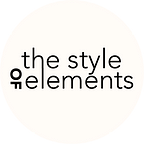Write button copy that gets clicks—and guides people
The all-important CTA isn’t just for marketing purposes
Creating a singular, easily identifiable call-to-action isn’t merely a marketing ploy. It’s good user experience design. People shouldn’t have to pause and think about how to navigate your site, apps, video players, and emails. Their movement around them should be intuitive. The hierarchy of elements and information you create helps a person identify what’s important, and what they can gloss over, even if they aren’t paying close attention—and bright, bold buttons with clear copy help them do just that.
Clarity over gaiety
When I first began writing for the internet, and for apps, I saw buttons first and foremost as an opportunity to usurp the user’s expectations and to use playful, overly casual copy to grab their eye. What I didn’t pay enough attention to, however, was how clearly that jovial copy was communicating what the person would be taken to, or expected to do next. My copy always made sense given the context, but not so much if people were skipping over the other text and going straight for the button. In these situations, buttons with phrases like, “Heeeeeere’s Johnny!” could come across as completely nonsensical and thereby ineffective.
OK. So I never actually wrote that in a button. But I’m sure I could have made it work. Would it have been worth it, though? Probably not. Making a joke, no matter how clever it may be, should never come at the expense of the user’s understanding of both what you’re trying to tell them, and where they’ll be taken upon clicking any given button. More often than not, clear and simple is just the ticket to clicktown. “Learn more,” “Join now,” “Save 10%,” “Add new card,” and other two or three-word phrases have overtaken the “Tell me more”s and “Nah”s in my microcopy vocabulary.
Think outside the button
That said, I think there is still room for this colloquial approach to button-copy composition. In a daily, weekly, or monthly newsletter, for example, one sent primarily for engagement purposes, it could be fitting to swap in more intriguing, less obvious, and more editorialized button copy that, in its mysteriousness, may inspire more clickage. This, though, all depends on the brand voice in which you’re writing. Both Vimeo and Foursquare, for instance, are rather irreverent brands that like to speak to their audience as though they’re speaking to a close friend. There’s a special lack of self-importance that I’ve enjoyed writing for in each of them. But for more buttoned-up brands like Apple, Square, or Google, you’re likely to see more straightforward takes on button language.
More difficult than writing clear and concise button copy, perhaps, is determining when a bit of copy should or should not be inside of a button. Typically, this decision falls to a designer. They decide that they need a direct call to action in a particular moment in a user’s journey, and in a button goes. We, the UX writers, are merely called upon to decide which two words will be juuuuuust right. Ideally, though, we aren’t merely writing words but instead, we’re thinking about and executing a very clear messaging strategy within every screen we touch. What’s the primary action this user needs to take? That should be the button. Are there two buttons? If so, why? Which is most important, and should be filled, rather than knocked out with a stroke? Would a text link be a better choice? Is there simply too much information than we can convey in one small button? And so on.
Strategic hierarchies
Ideally, the hierarchical nature of buttons is determined solely by the user’s needs and desires. But when you’re working for a for-profit business, more likely than not you’ll also need to consider your company’s ulterior motives. For instance, maybe you’re trying to encourage more plays on videos than follow on channels. The play button, then, should take precedence over the follow button. Or maybe you’re hoping to increase sales of an entire season, and downplay the individual episode purchase option. So long as you’re still providing a clear path to other options, or giving users an escape hatch, this doesn’t have to be an evil practice. Sometimes, it’s just good business. Maybe? That’s what I tell myself at night, anyway.
But(ton), so what?
A button is a button is a butt on is a but ton is a not tub is a hot tub? <- Behold, the state of my brain when I spend too long debating the perfect iamb to sit in any given little rectangular or pill-shaped element. But really: the answer is always pretty obvious. What does the user need to do? Where do they need to go? And where will this button take them, and what will it help them accomplish? The correct two or three or four words? Yeah, they’re somewhere in there. Heeeeeeere’s button copy!
